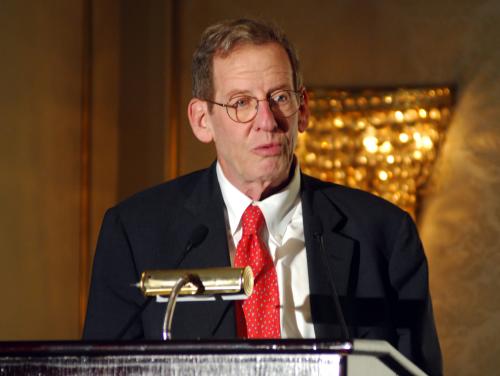
In a keynote speech before the Black Sea Energy and Economic Forum in Istanbul, Ambassador Richard Morningstar, the U.S. Special Envoy for Eurasian Energy, reflected on how much has changed about Eurasian energy issues since his work in the Clinton Administration. “On the supply side, shale gas and other developments could emerge as real game changers.
Some argue, for example, that the United States could become a substantial exporter of gas to Europe and global markets in just a few years.”
And what a difference a few years can make. In the early part of this century, the U.S. Department of Energy was forecasting a relentlessly growing need for gas imports to the United States. Projects for liquefied natural gas (LNG) imports proliferated. On its website, the Federal Energy Regulatory Commission (FERC) still says that natural gas usage in the United States is increasing while production is falling, with growing LNG imports needed to offset the gap between supply and demand. In the meantime, industry decided otherwise, making major investments in unconventional gas (shale gas, tight gas, and coal bed methane) in the United States and developing low permeability gas reservoirs on a large scale. Three U.S. LNG terminals now have export permits. One terminal in Texas is already operational.
Long known to abound around the globe, until very recently unconventional gas was produced in significant volumes only in North America. In other parts of the world, unfavorable natural gas policies and market conditions, combined with scarce expertise and inadequate technologies, have resulted in limited development. In Eurasia, concerns about security of natural gas supply, viability of transit, and relationships with key industry players have invariably been evaluated through the prism of traditional views about the extent, geographic distribution, and terms of access to natural gas resources.
In the United States and throughout Eurasia, fears about availability of resources, inadequate governance in producing countries, inadequate investment and maintenance of facilities, and poor investment climate have cast a long shadow over prospects for energy security. Concerns have been particularly acute in Eurasia, where many countries are heavily dependent on single sources of gas.
America’s success in unconventional gas has changed the geopolitics of gas markets, leading to positive revisions of the outlook for Eurasian gas. Exploration sites are active in Europe, China, and elsewhere. A global effort to assess unconventional gas resources is currently underway. For example, the International Energy Agency recently estimated Europe’s unconventional gas potential as equivalent to forty years of gas imports at current levels. Almost half of this supply is thought to be in shale.
Though promising, unconventional gas is not free of controversies. To tap the resources in shale, the rock must first be fractured using large quantities of water, which can become contaminated in the process and must be properly treated. During gas extraction from tight reservoirs, formation brines are produced that also must be treated and disposed of properly. Potential contamination of aquifers is yet another concern.
To address the promise, the concerns, and the politics of unconventional gas, various proposals have been put forward. There seems to be a broad consensus regarding the essential role of natural gas in the energy future of the world. However, discussions are ongoing about the type and scope of regulations, as well as their potential impact. Outside the United States, the potential of unconventional gas is yet to be properly evaluated and a coherent policy and regulatory approach is yet to emerge.
Eurasia’s natural gas markets—liberalizing and opening to competition in the European Union but still mostly government-controlled elsewhere—are hanging in the balance. It is just a matter of time before competition from the emerging global natural gas market catches up with Eurasian governments and businesses. There will be parties wishing to either import cheap gas, or look for it in Eurasia. This seems like a winning situation for both businesses and consumers. The only losers will be those who believe gas markets in Eurasia cannot get beyond the dominant historic model of long-term contracts and gas prices tied to liquid fuels.
As Ambassador Morningstar said, “A lot has changed with respect to Eurasian energy…but a constant has been that the markets reward those who can best adapt to change when circumstances require it.”
Dr. Boyko Nitzov is Director of Programs for the Dinu Patriciu Eurasia Center at the Atlantic Council.
